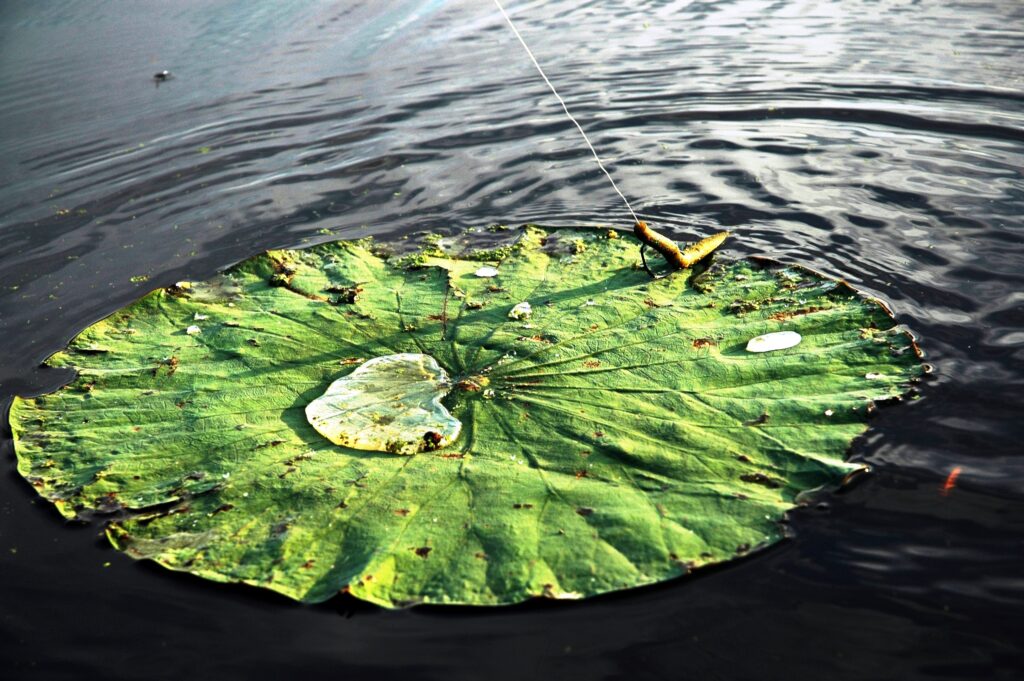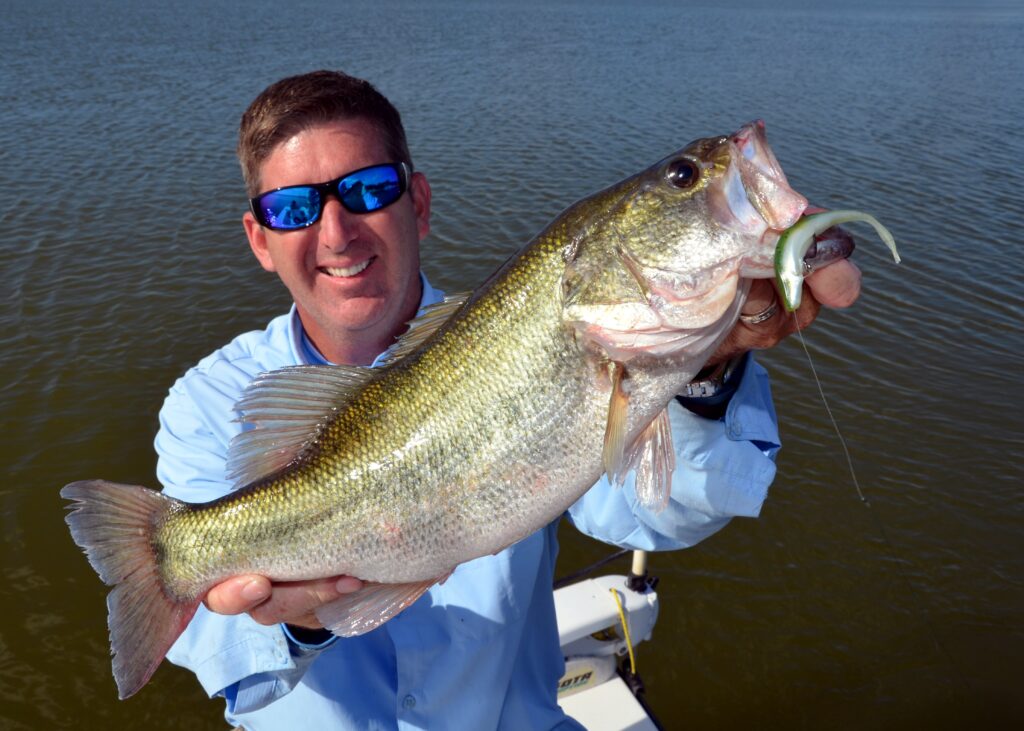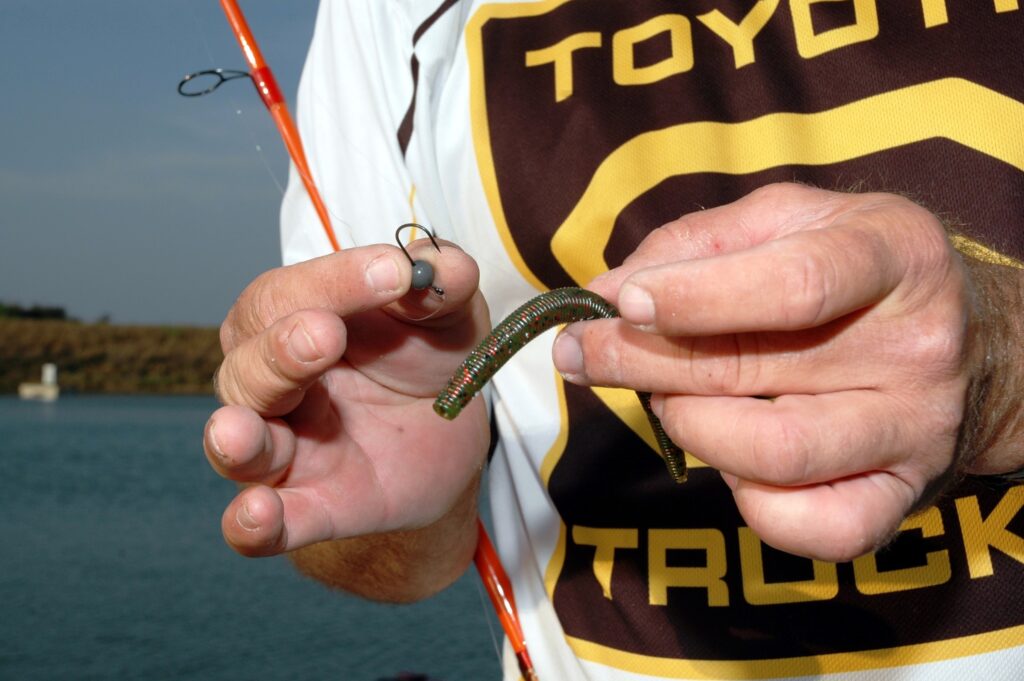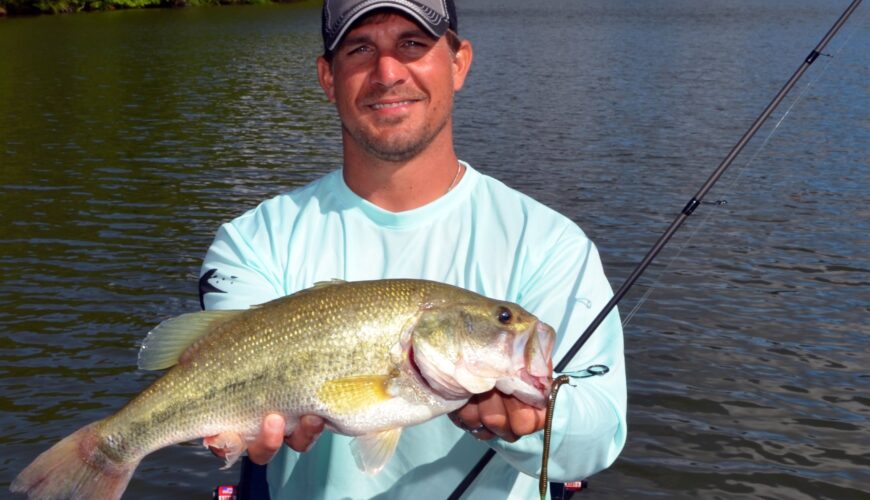Tactics
Sporting Clays Technique: How To Deal With Teal
November 24, 2025 •Mark Chesnut
August 13, 2025
When the red line in the thermometer accelerates and even the air seems to sweat, slow down to catch bass quicker.
Just like people, bass don’t want to move much during the summer swelter. They go where they find cooler temperatures and stay there. Things like matted weeds, lily pads and docks that provide shade, as well as creek channels with some current or bubbling springs can act like an air conditioner to a hot, cold-blooded creature. Nonaggressive bass won’t chase baits fast or far from their cool lairs, but they might slurp a tempting morsel staring it in the face.
Many bass go deep to find cooler, more comfortable temperatures, but some bass stay shallow all year long. In the shallows, matted grass shields bass from the blistering sun. These dense salads also make excellent hiding places for minnows, shad, crustaceans, panfish and many other creatures that bass eat. Aquatic weeds produce oxygen, a commodity often lacking in hot, shallow waters. Even on the most scorching days, some giant bass burrow into thick weeds, perhaps in water less than a foot deep.
Few baits can navigate floating vegetation mats without hanging up, but unweighted slithering soft-plastic jerkbaits and other snake-like temptations can skitter across grass tops. With the hook inserted into the plastic body like a Texas-rigged worm, but without the sinker, these lifelike baits dance across the thickest weeds. They combine the attributes of exciting topwater action and the weedless enticement of worms.

– Rigged with the hook inserted into the plastic, an unweighted soft-plastic bait can run across lily pads without snagging. John N. Felsher Photo
“In thick matted grass, nothing works better than a weightless soft-plastic jerkbait,” remarks Terry Segraves, a professional bass angler from Florida. “I work it over the grass tops just like a topwater bait. It’s unbelievable some of the explosions we see with those baits.”
Hold the rod tip high and pull a soft-plastic over the grass tops in slow, short spurts. Stop periodically. Frequently, bass explode up through weeds to engulf the bait and vegetation at the same time. At small pockets, subtly pull the bait over the edge and let it sink a few feet before pulling it up. Add a little weight to get the bait deeper down into pockets as necessary.
“Soft-plastic jerkbaits work extremely well with no weight, but they also work great with a weight,” explains Kevin VanDam, a four-time Bassmaster Classic champion from Michigan. “I only add just enough weight to get the bait down. I pop it up. It has a fast, erratic darting action. When the weight carries it to the bottom, it looks like a dying shad. I use that in places where fish feed on shad, herring and other baitfish.”
Worms rigged wacky style also work around thick weeds, docks, bulkheads and other cover. Rigged weightless with the hook inserted through the bulbous “egg sack” or middle of a straight worm instead of thrust “down the throat” as in a Texas rig, a wacky worm looks natural, almost like an earthworm washed into the lake by a summer thunderstorm. As it sinks, the ends wobble and quiver, giving off vibrations that fish feel, sometimes, spiraling down like a dying shad.
“Few lures have a higher percentage of getting a bite than a wacky-rigged worm,” advises Matt Lee, a professional bass angler from Alabama. “A finesse worm rigged wacky style with a weedless hook through the plastic makes a great technique when bass go shallow and feed on bluegills. It’s the French fry of bass fishing. Fish can’t resist taking a bite.”

Todd Kersey shows off a largemouth bass he caught on a soft-plastic fluke-type bait while fishing a pond near Miami, Fla. John N. Felsher Photo
Working a wacky worm requires very little effort, but excruciating patience. Simply drop the bait next to cover and let it sink. Don’t add any other action. With nearly neutral buoyancy, wacky worms take forever to sink, but that makes them highly effective down to about eight feet deep. After it sinks to the bottom or several seconds with nothing happening, pull it back up to the surface. Drag it a couple feet across the surface and let it sink again.
“A weightless wacky worm is a shallow-water presentation,” says Mike Iaconelli, a former Bassmaster Classic champion from New Jersey. “If I’m fishing the zero- to 10-foot range, I use a wacky worm with a 3/0 hook rigged in the middle. Always let it fall on a semi-slack line, not too tight or too slack. Watch and keep control of the line. About 90 percent of the time, fish hit it on the fall before it ever reaches the bottom. Since bites normally occur on the fall, it’s an outstanding bait to use around vertical cover.”
To fish slightly deeper, try a flick shake. A flick-shake rig involves a wacky-style worm, but instead of a plain hook, use a jighead or a shank weight. This creates a pivot point that allows it to sink with subtle action.
“A flick shake is a finesse technique that shows fish traditional wacky action, but at much deeper levels,” Iaconelli commented. “The weight sinks faster than the worm, so it drives it down with the worm waving and twitching the ends above it.”
A flick-shake rig works particularly well around vertical cover, such as bridge or dock pilings, bluffs, standing timber or bulkheads. It also tempts bass lurking near deep rock piles, sandbars or ledge edges.

An angler prepares to rig up a flick shake, a weighted jighead designed to fish a straight worm wacky style. John N. Felsher
“A flick shake is an outstanding bait to use around vertical cover,” Iaconelli says. “People can use it around woody cover, grass beds, trees and docks because those things have vertical edges. Although it’s mostly a deeper presentation, anglers can also use it in shallow water. A dock piling or next to a grass bed is an ideal place to throw a flick-shake.”
For an even deeper presentation, a drop shot mirrors a Carolina rig, but with the hook above the sinker instead of below it. Use light fluorocarbon line and tip the hook with a grub, worm or other small plastic temptation. During the summer, shad usually measure about two to three inches long, so use baits about that size on a special drop-shot hook or an offset worm hook.
Although mostly a vertical technique for deep water, drop shots also tempt bass in the shallows by dangling finesse baits just above sandbars, submerged weeds or fish beds. Throw the sinker beyond the honey hole so the lure hangs over the most likely spot to hold a bass. Shake the rod to make the bait quiver seductively.
To catch the biggest bass, go where they want to stay. In the summer, that’s the coolest, most oxygenated water. The right cast in the right spot could produce the bass of a lifetime.
 John N. Felsher is a professional writer, broadcaster, photographer, editor and consultant. An avid sportsman, he’s written more than 4,000 articles for more than 176 different magazines on a wide variety of outdoors topics. He also hosts an outdoors tips show for WAVH FM Talk 106.5 radio station in Mobile, Ala. Contact him at j.felsher@hotmail.com or through Facebook.
John N. Felsher is a professional writer, broadcaster, photographer, editor and consultant. An avid sportsman, he’s written more than 4,000 articles for more than 176 different magazines on a wide variety of outdoors topics. He also hosts an outdoors tips show for WAVH FM Talk 106.5 radio station in Mobile, Ala. Contact him at j.felsher@hotmail.com or through Facebook.
If you buy through links on our site, we may receive a small commission, at no additional cost to you. These funds help fund our efforts in bringing you valuable content.
